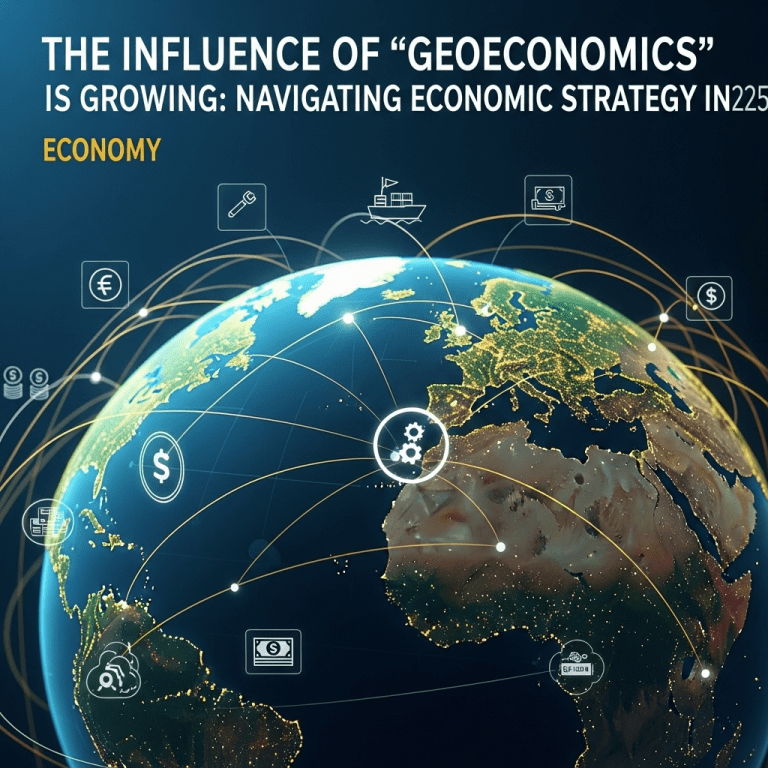The influence of ‘geoeconomics’ is growing at an unprecedented rate, transforming how governments, investors, and multinational businesses approach global commerce. As international relations and economic policy become increasingly intertwined, understanding geoeconomics has never been more important for those navigating the complexities of a dynamic world economy.
Why the Influence of ‘Geoeconomics’ is Growing in Today’s World
Driven by globalization, shifting geopolitical alliances, and technological disruption, the influence of ‘geoeconomics’ is growing among nations and industries alike. Geoeconomics—where economic tools are leveraged to achieve geopolitical goals—has become central to everything from trade negotiations to securing critical resources. Countries are embracing policies that blend economic strength with strategic intent, using tariffs, sanctions, and state-backed investments to reinforce national interests on the world stage.
According to experts, the rise of geoeconomic strategies is a response to a new era of uncertainty, marked by a fracturing of traditional alliances and increasing economic nationalism. This trend is evident in the way both Western and emerging economies deploy export controls, enter strategic partnerships, and reconsider supply chains to mitigate risk and build resilience.
Understanding the Core Concepts of Geoeconomics
Defining Geoeconomics
At its core, geoeconomics describes the use of economic policy and power to accomplish geopolitical objectives. Unlike traditional geopolitics, which emphasizes military might, geoeconomics focuses on leveraging trade deals, foreign direct investment, sanctions, and infrastructure projects to shape international outcomes.
Tools and Tactics
The tools commonly used in geoeconomic competition include:
- Economic sanctions
- Trade agreements and barriers
- Investment in strategic sectors
- Monopolizing access to rare resources
- State-driven technological innovation
When wielded with strategic intent, these instruments allow countries or alliances to exert influence and advance their economic sovereignty.
Impact on Global Markets and Businesses
As the influence of ‘geoeconomics’ is growing, markets are feeling the impact. Businesses are now forced to factor in not only traditional economic indicators but also the political motivations behind government actions. Commodity prices, global supply chains, and investment flows can all be disrupted by the introduction—or even the threat—of tariffs, embargoes, or blacklists.
This uncertainty has prompted a surge in risk assessment and scenario planning within the private sector. Companies are diversifying suppliers, reshoring manufacturing, and seeking political risk insurance as protection against the volatility induced by geoeconomic rivalry.
Key Regions Where Geoeconomics is Shaping the Future
United States and China
The competition between the U.S. and China remains the most visible arena for geoeconomic strategies. From high-stakes technology bans to the ‘de-risking’ initiatives in semiconductors and clean energy, this rivalry is influencing policies far beyond their borders.
Europe’s Strategic Autonomy
Europe is also focusing on enhancing its geoeconomic position. The European Union is actively pursuing strategic autonomy, developing new regulations on foreign investment, and investing heavily in digital and green industries to reduce external dependency.
Emerging Markets and Resource Diplomacy
Meanwhile, resource-rich countries in Africa, Latin America, and Central Asia are leveraging their energy and mineral assets to negotiate favorable terms with global powers. For investors, tracking these regions has become essential for identifying opportunities and risks.
Challenges and Opportunities Created by Growing Geoeconomic Influence
While the influence of ‘geoeconomics’ is growing, it brings both obstacles and openings for stakeholders in the global economy. Protectionist measures, for instance, can limit market access and disrupt established business models. Yet, the need for new supply chains and resilient infrastructure is also spurring innovation and investment in emerging sectors.
For policy-makers and analysts, there is a premium on real-time intelligence gathering, robust analytics, and strategic foresight. Staying ahead means understanding how economic tactics are evolving and how they’ll shape the competitive landscape.
Adapting to the New Geoeconomic Reality
Strategic Decision-Making
To navigate this environment, investors and leaders are integrating geoeconomic considerations into every part of the decision-making process. From boardrooms to government ministries, assessment tools that combine economic forecasting with geopolitical risk are in high demand.
Building Resilience and Flexibility
Agility is crucial. Flexible operational models, diversified partnerships, and ongoing engagement with policymakers are now essential strategies for long-term success in the geoeconomic age.
Conclusion: The Road Ahead
The influence of ‘geoeconomics’ is growing, and 2025 marks a tipping point for how nations and businesses interact on the global stage. As economic and geopolitical interests become ever more entwined, those who understand and adapt to geoeconomic strategies will be better equipped to thrive in an increasingly complex world economy.









